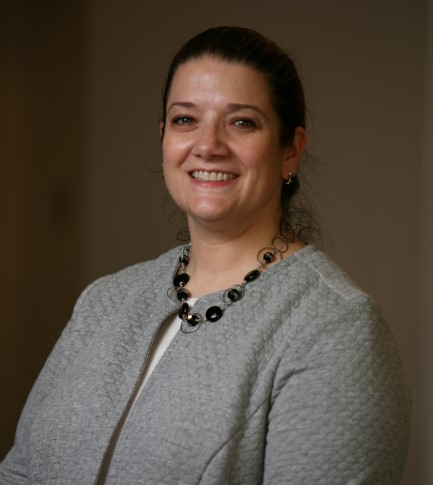Be Bold. Get Inspired. Take Action.
Enabling “a concrete deliverable that can be applied right away”
Receive free IIBA updates and exclusive content!
One of the more common questions I hear in IIBA-related meetings – “What brought you to IIBA?” Now, the answers vary. For some, it is the desire for certification. For others, it is finding a new job or even a new career. And, then, you sometimes hear “I want to build my skills.” Undeniably, this last one is not the first one you hear, but it is often the one that keeps folks coming back to IIBA. Those Chapters that seek to feed that need are seeing positive results.

Last month, I referenced three Chapters that regularly co-host the Technique Boutique series (IIBA Halifax, IIBA Ottawa-Outaouais, and IIBA Palmetto). Inspired, I met with Chapter Leaders Lianne Watford (IIBA Palmetto Chapter President) and Nancy Beatson (IIBA Ottawa-Outaouais Chapter President) to discuss more about this popular series. The idea originated with Lianne and Christina Abbott during a conversation in 2019, when Lianne, a self-proclaimed lover of techniques, proposed the idea of hosting a regular series; and the idea was born. The idea was a year in the making, with the Technique Boutique series premiering in 2021 – with one session each quarter. The sessions feature well-known, engaging speakers and highlight specific techniques in the BABOK® and the assorted IIBA® extensions. Each session typically engages its audience through equal parts presentation and Q&A. Given the collaboration between the three Chapters and the support of their extensive study group network, these mid-day, mid-week sessions are catering to high audience numbers, with continually increasing international participation and registration. Both Lianne and Nancy championed the hands-on feel of these virtual events. In fact, Nancy stated that these meetings provide “a concrete deliverable that can be applied right away.” In that sense, as an attendee, it is everything you can ask for as you grow your proverbial toolbox. As a Chapter leader, it is everything you want to offer your membership. 2022 has seen two sessions already, with two additional sessions planned for the fall. Both Chapters are also interested in offering follow on workshops for even more in-depth, hands-on experience for the participants in the future.
As I often do, I then started asking others about their go-to or newly found treasured techniques. I, of course, started with our Chapter co-hosts and expanded to include our 2021 Volunteers of the Year (VOY). Not surprisingly, everyone preferred some sort of visualization or conceptualization. Nancy favors scope modeling for its inclusion of stakeholder analysis, change management, and strategic vision. Both Lianne and Yasser Talat include process flows and process modeling as the most important tools in their respective toolboxes. According to Yasser, “I rarely work on a solution that does not include a process that needs to be modelled.” Debbi Levin concurs with the visualization techniques, leveraging context diagrams as her favorites.
Now, Georges Bryson supports going “old school” for visualization. He advocates for stakeholders to physically approach the whiteboard (either physical or virtual) and “put legs to the chaos of words. Sketch it out…informally…not necessarily a la BPMN or Activity diagram (don't get bogged down by the semantics of formality to kick-start creativity) … plain old sketch with colours (I use red for areas of improvement, green is good). Use big colourful similes, icons, visual metaphors.”
Georges also recommended something that was very new to me: Neuro-Linguistic Programming. According to Wikipedia, “Neuro-linguistic programming (NLP) is a pseudoscientific approach to communication, personal development, and psychotherapy created by Richard Bandler and John Grinder in California, United States, in the 1970s. NLP's creators claim there is a connection between neurological processes (neuro-), language (linguistic) and behavioral patterns learned through experience (programming), and that these can be changed to achieve specific goals in life.” Georges states: “(It is) understanding how we as humans (stakeholders) are programmed. Beliefs, Value, Reframing, Emotional Intelligence (EI), Values, Active listening, Empathy.”
The group also advocated for the following techniques as well:
- Business Model Canvas
- Business Motivation Model
- Document Analysis
- Empathy Mapping
- Painkillers, Vitamins, and Candy (prioritization technique derivative of MoSCoW that I tried this week)
- Value Proposition Model
Meetings, like the Technique Boutique, enable us all to be (re)introduced to wonderful tools – sometimes finding much needed inspiration. Use your IIBA membership to attend these types of meetings around the world for free and to investigate further through the great corresponding reference materials in the Knowledge Hub and Digital Library.
For further reading, consider the following: (Thanks, Georges!)
- The Doodle Revolution by Sunni Brown
- Draw to Win by Dan Roam
- Gamestorming by Dave Gray, Sunni Brown
- Liminal Thinking by Dave Gray
- NLP for Business Analysis by Peter Parkes
- Unfolding the Napkin by Dan Roam
- Visual Meetings by Dave Sibbet
Reminder: 2021 Volunteers of the Year:
- Eastern Region: Georges Bryson - Montreal
- West/Central Region: Debbi Levin - Phoenix
- Middle East, Africa, Asia Pacific, and India: Yasser Talat - Egypt
- Europe Region: Claude Duc - Geneva
Be Bold features members, volunteers, and Chapters who are taking bold action. If you have a story to tell or a recommendation for future inclusion, please feel free to reach out to communications.director@gcc.iiba.org.
Are you inspired and want to take action?
Unlock your business analysis potential and grow your career with IIBA Membership. Network with your local community, attend complimentary events around the world, use tools like the Career Action Guide, and more.
About the Author:

Koryn Anderson enjoyed a couple of careers before finding her ultimate one. She has been a business analyst for more than 10 years and is currently a Lead Business Analyst at Baird. She is passionate about the BA discipline, has her CBAP® certification, is Past President of the Southeast Wisconsin Chapter, and is the current Communications Director for the Global Chapter Council.



